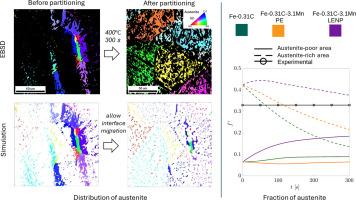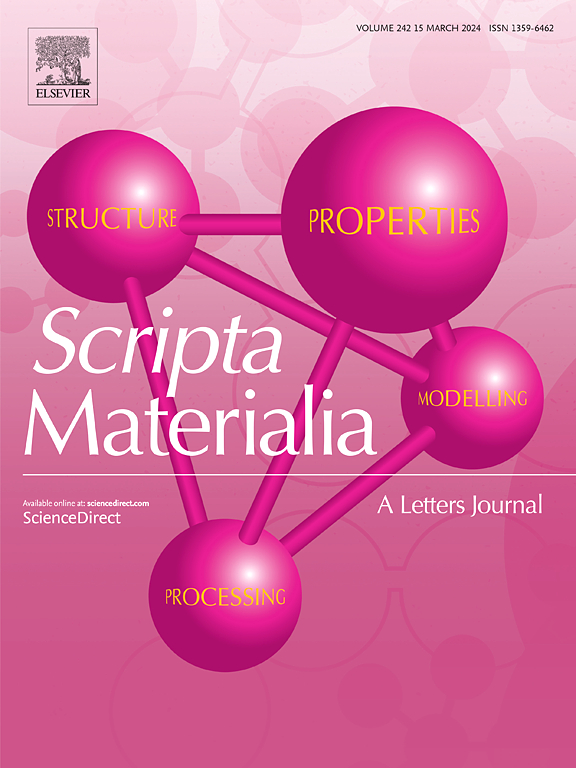马氏体/奥氏体 Q&P 加工不锈钢微观结构带演变建模
IF 5.3
2区 材料科学
Q2 MATERIALS SCIENCE, MULTIDISCIPLINARY
引用次数: 0
摘要
本研究讨论了在淬火和分型(Q&P)加工的马氏体/奥氏体不锈钢中观察到的微观结构演变,在 400 °C 分型步骤持续 300 秒期间,由于元素偏析而形成的富含奥氏体的明显微观结构带演变为奥氏体晶粒的均匀分布。这种现象的特征是,碳从马氏体向奥氏体的分配与马氏体-奥氏体界面的运动相结合,并利用该模型进行了研究。研究发现,所观察到的微观结构带的消除与奥氏体晶粒的拓扑分布以及支配分割过程的各种界面的热力学平衡机制的异质性有关。此外,模拟还从锰的作用角度研究了带状消除(局部平衡)和向全局平衡相分数的相生长的共存关系。结果发现,局部平衡-可忽略分区(LENP)条件导致了最现实的结果。本文章由计算机程序翻译,如有差异,请以英文原文为准。

Modelling the evolution of microstructural bands in a martensite/austenite Q&P-processed stainless steel
This work discusses the microstructure evolution observed in a quenching and partitioning (Q&P)-processed martensite/austenite stainless steel during the partitioning step at 400 °C for 300 s, where distinct microstructural bands rich in austenite due to elemental segregation, evolve into a uniform distribution of austenite grains. This phenomenon is characterised and investigated using a model for the carbon partitioning from martensite to austenite coupled with the movement of the martensite-austenite interface. The observed elimination of microstructural bands is found to be related to the topological distribution of austenite grains and the heterogeneity of the thermodynamic equilibrium regime at the various interfaces governing the partitioning process. Furthermore, the concurrence of banding elimination (local equilibrium) and phase growth towards the global equilibrium phase fractions is investigated in the simulations in terms of the role of Mn. It is found that the local equilibrium-negligible partitioning (LENP) conditions lead to the most realistic outcome.
求助全文
通过发布文献求助,成功后即可免费获取论文全文。
去求助
来源期刊

Scripta Materialia
工程技术-材料科学:综合
CiteScore
11.40
自引率
5.00%
发文量
581
审稿时长
34 days
期刊介绍:
Scripta Materialia is a LETTERS journal of Acta Materialia, providing a forum for the rapid publication of short communications on the relationship between the structure and the properties of inorganic materials. The emphasis is on originality rather than incremental research. Short reports on the development of materials with novel or substantially improved properties are also welcomed. Emphasis is on either the functional or mechanical behavior of metals, ceramics and semiconductors at all length scales.
 求助内容:
求助内容: 应助结果提醒方式:
应助结果提醒方式:


